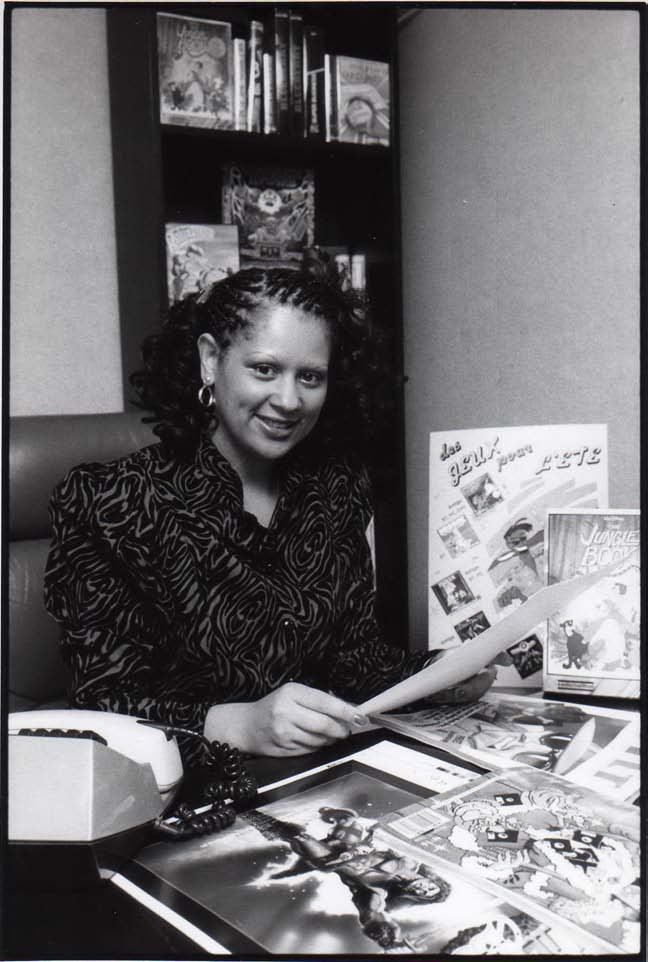|
Getting your Trinity Audio player ready...
|
Men controlled the video gaming industry in the 1980s. The first black woman to design a video game was Muriel Tramis, a French-Caribbean woman who defied convention. Future generations of women and minorities in the game business can thank her for paving the way. This blog post will examine Muriel Tramis and her video game industry accomplishments in more detail.
Early Life and Career
In 1958, Muriel Tramis was born in the Caribbean French colony of Martinique. Early on, she became interested in computers and programming, and she later attended the University of Paris to study computer science. She worked as a software engineer for a while after graduation before switching to video game production.
In 1958, Muriel Tramis was born in the Caribbean French colony of Martinique. Early on, she became interested in computers and programming, and she later attended the University of Paris to study computer science. She worked as a software engineer for a while after graduation before switching to video game production.
Fun Fact #1: Muriel Tramis was inspired by the potential of video games to tell meaningful stories. She wanted to use video games to learn more about her cultural background and to provide voices to those frequently left out of the narratives of video games.
Fun Fact #2: She was also a founding member of the Zouk Machine, a group supporting Caribbean music and culture.
Fun Fact #3: Muriel Tramis left the video game industry after several years to pursue other passions, such as instructing computer science and creating educational software.
Video game creation
Tramis joined the French video game business Coktel Vision as a game designer in 1987. Although she worked on several games, Freedom: Rebels in the Darkness, released in 1989, is her most well-known creation. The game was hailed for its historical realism and engaging gameplay as it chronicles a slave uprising in the Caribbean in the late 18th century.

About the game Rebels in the Darkness
Rebels in the Darkness was created by Muriel Tramis and published in 1989. The game is set in the Caribbean in the late 18th century when slavery was still widely practiced. The player assumes the position of Esteban, an African woman being held as a slave and is determined to launch a revolt against her captors.
Instead of being played on consoles, the game was played on personal computers such as the Atari ST, Amiga, and DOS.
The gameplay entails navigating various areas, solving puzzles, and conversing with non-playable characters to get resources and knowledge. Toussaint L’Ouverture, the leader of the Haitian revolution, is one of the historical personalities and events the player encounters as they advance through the game.
The dialogue in Freedom: Rebels in the Darkness uses Creole, a French-Caribbean language, which is unique. The gaming business, which had hitherto concentrated on English and other popular languages, was revolutionized by this action.
Fourth fun fact: The game Freedom: Rebels in the Darkness was one of the earliest video games to deal with a significant historical event.
Fun Fact #5: Tramis used Creole, a French-Caribbean language, in her games. Characters spoke that language.
Fun Fact #6: The game’s heroine, Esteban, an enslaved lady, was based on Tramis’ grandmother.
Influence and Legacy
After several years, Tramis continued to work in the video game industry but finally quit to pursue other interests. Yet, it is impossible to overstate her influence on the sector. She paved the way for women and underrepresented groups in a male-dominated industry, and her games defied preconceived preconceptions about what video games could be.
Interesting fact #7: In 2021, Tramis was admitted to the Hall of Fame of the Academy of Interactive Arts & Sciences.
Fun Fact #8: Tramis’ games have been updated for contemporary platforms, bringing her creations to the attention of a brand-new generation of players.
Fun fact #9: In 2012, “The Art of Video Games” at the Smithsonian American Art Museum included Freedom: Rebels in the Darkness.

Tenth fun fact: Her most popular video games she created were:
- Freedom: Rebels in the Darkness (1990)
- Méwilo (1992)
- Lost in Time (1993)
- Gobliiins (1993)
- Geisha (1990)
Conclusion
It is impossible to overestimate Muriel Tramis’ contributions to the video gaming industry. She dismantled barriers and opened the way for later generations as the first black woman to design video games. Her legacy continues to encourage diversity and inclusiveness in the gaming industry. Her games set the bar for cultural relevance and historical authenticity.


